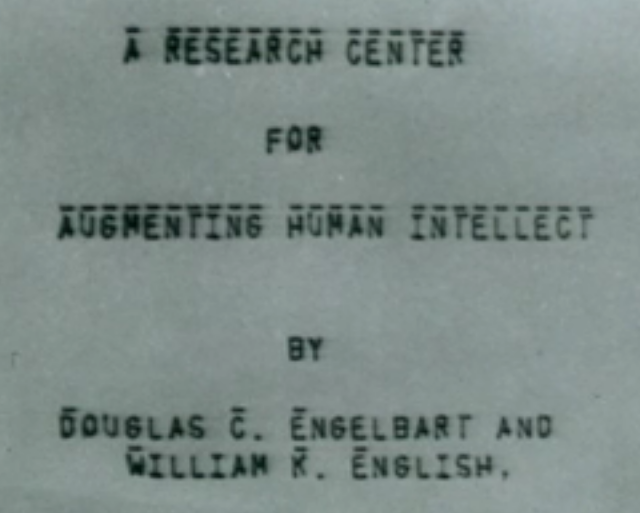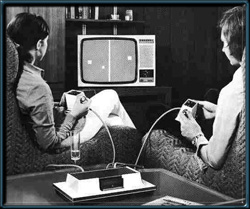© Mark Ollig
Wednesday, Jan. 1, 2020, marks not only the end of another year but another decade traveling around the sun aboard the spaceship Earth.
It’s also been another decade of learning and searching for information on the internet.
It’s no surprise to know most folks Google their information.
In 1997, a year before being publicly available online, Google was only available at Stanford University.
Google’s software operates using sophisticated algorithms, enabling accurate results to our search requests.
A Google search queries the physical and virtual data servers located in the networked “clouds” of the internet for the word or expression inquired.
In 1990, Tim Berners-Lee built the first web server and a browser-editor code application called WorldWideWeb (no spaces). It later became known as Nexus.
The first website was on Berners-Lee’s NeXT computer, was called info.cern.ch, and was hosted by the European Organization for Nuclear Research, now known as CERN.
The World Wide Web, as we know it, became publicly available in 1991.
Some trivia: Before using the name “Web,” Berners-Lee thought of the names “Information Mesh,” “The Information Mine,” and “Mine of Information.”
The “web” was first described in a proposal by Berners-Lee in March 1989 at CERN.
In this document, he describes the method of retrieving hyperlinked information, saying, “The storage method must not impose its own restrictions on the information. This is why a “web” of articles with links (as references) between them is much more useful than a fixed hierarchical system.”
The same year, while working at CERN in Geneva, Switzerland, Berners-Lee stabled The WWW Virtual Library website. It is the oldest online research catalog of the web, and is still accessible at http://www.vlib.org.
Early internet search engines include Archie in 1990, Gopher in 1991, Veronica in 1992, Jughead in 1993, Infoseek, Yahoo!, Lycos, and WebCrawler, in 1994.
Altavista and MSN (now known as Bing) began in 1995, and was used with the Microsoft Windows 95 Operating System.
AskJeeves started in 1996.
In 2008, the search engine DuckDuckGo went online. It describes itself as “the search engine that doesn’t track you.”
DuckDuckGo states they protect user privacy by not collecting and saving their search information. This search engine uses an anonymous encrypted search; they do not track user IP addresses or place cookies.
Amazingly, Google controls 90.46 percent of the worldwide search engine market.
As of Dec. 23, 2019, here are the top Google “Year in Search” US subject rankings.
News
1. Hurricane Dorian.
2. Notre Dame Cathedral.
3. Woman’s World Cup.
4. Area 51 raid.
5. Copa America.
People
1. Antonia Brown.
2. Jussie Smollett.
3. James Charles.
4. Kevin Hart.
5. R. Kelly.
Diets
1. Intermittent fasting diet.
2. Dr. Sebi diet.
3. Noom diet.
4. 1200 calories diet.
5. Golo diet.
Movies
1. “Avengers: Endgame.”
2. “Captain Marvel.”
3. “Joker.”
4. “Toy Story 4.”
5. “The Lion King.”
Musicians and bands
1. R. Kelly.
2. 21 Savage.
3. Billie Eilish.
4. Lil Nas X.
5. A$AP Rocky.
Deaths
1. Cameron Boyce.
2. Nipsey Hussle.
3. Luke Perry.
4. Jeffrey Epstein.
5. Tyler Skaggs.
What is?
1. What is Area 51?
2. What is VSCO girl?
3. What is momo?
4. What is a boomer?
5. What is quid pro quo?
TV shows
1. “Game of Thrones.”
2. “Stranger Things.”
3. “When They See Us.”
4. “Chernobyl.”
5. “The Mandalorian.”
Weddings
1. Miranda Lambert.
2. Jennifer Lawrence.
3. Justin Bieber.
4. Miley Cyrus.
5. Chiquis Rivera.
Recipes
1. Shepherd’s pie.
2. Chicken parmigiana.
3. Ham glaze.
4. Charoset.
5. Snickerdoodle cookies.
People of the red carpet
1. Billy Porter.
2. Cardi B.
3. Lady Gaga.
4. Amy Schumer husband.
5. Jenny McCarthy.
Professional sports scores
1. Washington Nationals.
2. Boston Bruins.
3. St. Louis Cardinals.
4. Dallas Cowboys.
5. St. Louis Blues.
Home style
1. Farmhouse style.
2. Colonial house style.
3. Cape Cod house style.
4. Spanish style house.
5. Art deco style.
Fashion style
1. Camp style.
2. Egirl style.
3. Eboy style.
4. Steampunk style.
5. Harajuku style.
The overall top-trending 2019 Google searches in the United States are:
1. Disney Plus.
2. Cameron Boyce.
3. Nipsey Hussle.
4. Hurricane Dorian.
5. Antonio Brown.
The overall top-trending 2019 Google searches worldwide are:
1. India vs. South Africa.
2. Cameron Boyce.
3. Copa America.
4. Bangladesh vs. India.
5. iPhone 11.
In 1998, Google averaged around 10,000 search queries each day, worldwide. This year, more than 2 trillion search queries per day have taken place.
As we celebrate the New Year, I raise a cup of good cheer to all of you, and for our successful internet search results in 2020.
Wednesday, Jan. 1, 2020, marks not only the end of another year but another decade traveling around the sun aboard the spaceship Earth.
It’s also been another decade of learning and searching for information on the internet.
It’s no surprise to know most folks Google their information.
In 1997, a year before being publicly available online, Google was only available at Stanford University.
Google’s software operates using sophisticated algorithms, enabling accurate results to our search requests.
A Google search queries the physical and virtual data servers located in the networked “clouds” of the internet for the word or expression inquired.
In 1990, Tim Berners-Lee built the first web server and a browser-editor code application called WorldWideWeb (no spaces). It later became known as Nexus.
The first website was on Berners-Lee’s NeXT computer, was called info.cern.ch, and was hosted by the European Organization for Nuclear Research, now known as CERN.
The World Wide Web, as we know it, became publicly available in 1991.
Some trivia: Before using the name “Web,” Berners-Lee thought of the names “Information Mesh,” “The Information Mine,” and “Mine of Information.”
The “web” was first described in a proposal by Berners-Lee in March 1989 at CERN.
In this document, he describes the method of retrieving hyperlinked information, saying, “The storage method must not impose its own restrictions on the information. This is why a “web” of articles with links (as references) between them is much more useful than a fixed hierarchical system.”
The same year, while working at CERN in Geneva, Switzerland, Berners-Lee stabled The WWW Virtual Library website. It is the oldest online research catalog of the web, and is still accessible at http://www.vlib.org.
Early internet search engines include Archie in 1990, Gopher in 1991, Veronica in 1992, Jughead in 1993, Infoseek, Yahoo!, Lycos, and WebCrawler, in 1994.
Altavista and MSN (now known as Bing) began in 1995, and was used with the Microsoft Windows 95 Operating System.
AskJeeves started in 1996.
In 2008, the search engine DuckDuckGo went online. It describes itself as “the search engine that doesn’t track you.”
DuckDuckGo states they protect user privacy by not collecting and saving their search information. This search engine uses an anonymous encrypted search; they do not track user IP addresses or place cookies.
Amazingly, Google controls 90.46 percent of the worldwide search engine market.
As of Dec. 23, 2019, here are the top Google “Year in Search” US subject rankings.
News
1. Hurricane Dorian.
2. Notre Dame Cathedral.
3. Woman’s World Cup.
4. Area 51 raid.
5. Copa America.
People
1. Antonia Brown.
2. Jussie Smollett.
3. James Charles.
4. Kevin Hart.
5. R. Kelly.
Diets
1. Intermittent fasting diet.
2. Dr. Sebi diet.
3. Noom diet.
4. 1200 calories diet.
5. Golo diet.
Movies
1. “Avengers: Endgame.”
2. “Captain Marvel.”
3. “Joker.”
4. “Toy Story 4.”
5. “The Lion King.”
Musicians and bands
1. R. Kelly.
2. 21 Savage.
3. Billie Eilish.
4. Lil Nas X.
5. A$AP Rocky.
Deaths
1. Cameron Boyce.
2. Nipsey Hussle.
3. Luke Perry.
4. Jeffrey Epstein.
5. Tyler Skaggs.
What is?
1. What is Area 51?
2. What is VSCO girl?
3. What is momo?
4. What is a boomer?
5. What is quid pro quo?
TV shows
1. “Game of Thrones.”
2. “Stranger Things.”
3. “When They See Us.”
4. “Chernobyl.”
5. “The Mandalorian.”
Weddings
1. Miranda Lambert.
2. Jennifer Lawrence.
3. Justin Bieber.
4. Miley Cyrus.
5. Chiquis Rivera.
Recipes
1. Shepherd’s pie.
2. Chicken parmigiana.
3. Ham glaze.
4. Charoset.
5. Snickerdoodle cookies.
People of the red carpet
1. Billy Porter.
2. Cardi B.
3. Lady Gaga.
4. Amy Schumer husband.
5. Jenny McCarthy.
Professional sports scores
1. Washington Nationals.
2. Boston Bruins.
3. St. Louis Cardinals.
4. Dallas Cowboys.
5. St. Louis Blues.
Home style
1. Farmhouse style.
2. Colonial house style.
3. Cape Cod house style.
4. Spanish style house.
5. Art deco style.
Fashion style
1. Camp style.
2. Egirl style.
3. Eboy style.
4. Steampunk style.
5. Harajuku style.
The overall top-trending 2019 Google searches in the United States are:
1. Disney Plus.
2. Cameron Boyce.
3. Nipsey Hussle.
4. Hurricane Dorian.
5. Antonio Brown.
The overall top-trending 2019 Google searches worldwide are:
1. India vs. South Africa.
2. Cameron Boyce.
3. Copa America.
4. Bangladesh vs. India.
5. iPhone 11.
In 1998, Google averaged around 10,000 search queries each day, worldwide. This year, more than 2 trillion search queries per day have taken place.
As we celebrate the New Year, I raise a cup of good cheer to all of you, and for our successful internet search results in 2020.
 |
| (Digital Art Right-to-Use fees paid) |


























